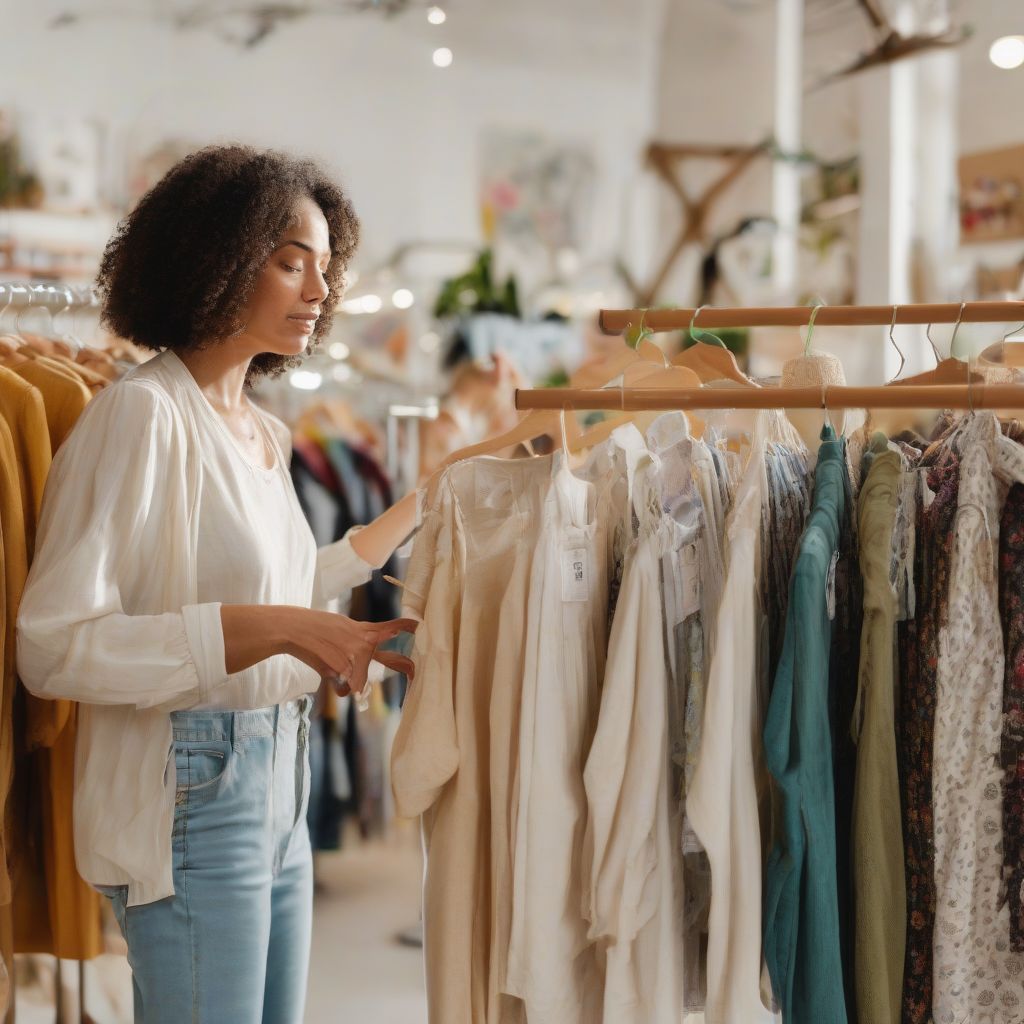Have you ever dreamt of a wardrobe filled with clothes that not only make you look good but also feel good about wearing? I’m not just talking about a flattering fit, but about clothing made with respect for the planet and the people who craft it. That’s the promise of ethical fashion! As a nutritionist and meal prepping coach, I understand the power of conscious choices. Just as we nourish our bodies with wholesome foods, we can nourish our souls and the world around us by choosing ethical fashion brands.
But let’s be honest, navigating the world of sustainable and ethical fashion can feel like wandering through a jungle of jargon. What does “fair trade” really mean? Is organic cotton truly better? And how can you be sure a brand is truly ethical, not just using buzzwords?
Don’t worry, I’m here to guide you through it! In this comprehensive guide, we’ll break down how to find and shop for ethical fashion brands that align with your values and style.
Understanding Ethical Fashion: Beyond the Buzzwords
Before we dive into the “how-to,” let’s clarify what we mean by “ethical fashion.” It’s more than just a passing trend; it’s a commitment to creating and consuming fashion in a way that values:
- Fair Labor Practices: This means ensuring fair wages, safe working conditions, and no child labor in the fashion supply chain.
- Environmental Sustainability: Ethical brands minimize their impact on the environment by using eco-friendly materials, reducing waste, and minimizing pollution.
- Animal Welfare: Ethical fashion champions cruelty-free practices, avoiding the use of fur, exotic skins, and excessive leather.
- Transparency: Truly ethical brands are open about their manufacturing processes, sourcing, and the social and environmental impact of their operations.
Your Guide to Finding Ethical Fashion Brands
Ready to embrace conscious consumerism? Here’s your step-by-step guide:
1. Look for Certifications and Standards
Think of certifications as trusted guides in the ethical fashion jungle. Here are a few key ones to look for:
- Fair Trade Certified: Ensures fair prices, fair labor conditions, and community development for farmers and workers, often in developing countries.
- GOTS (Global Organic Textile Standard): Certifies organic status of textiles from harvesting of the raw materials to environmentally and socially responsible manufacturing.
- OEKO-TEX Standard 100: Indicates that the textile has been tested and certified to be free from harmful substances.
- B Corp Certification: Recognizes companies that meet high standards of social and environmental performance, transparency, and accountability.
Expert Tip: Don’t be afraid to dig a little deeper! Visit the websites of these certifications to understand what they stand for and how they audit brands.
2. Do Your Research: Brand Values and Transparency
While certifications provide a good starting point, it’s crucial to look beyond labels and investigate a brand’s values:
- Visit the “About Us” Page: Look for a clear mission statement that outlines the brand’s commitment to ethical and sustainable practices.
- Check for a “Sustainability” or “Ethics” Section: Reputable brands will have dedicated pages detailing their sourcing, manufacturing processes, labor practices, and environmental initiatives.
- Look for Transparency in the Supply Chain: Can you trace where the materials come from or where the clothes are manufactured? The more transparent, the better.
- Read Reviews and Seek Out Ethical Fashion Blogs: What are other conscious consumers saying about the brand? Blogs and ethical fashion directories can be valuable resources.
3. Pay Attention to Fabrics: Choosing Eco-Friendly Options
The fabrics used to make our clothes have a huge impact on the environment and our skin. Here are some sustainable and ethical choices:
- Organic Cotton: Grown without harmful pesticides and fertilizers, making it better for the environment and farmers’ health.
- Hemp: A durable and fast-growing fiber that requires minimal water and pesticides.
- Linen: Made from flax plants, linen is biodegradable and requires less water and energy to produce compared to cotton.
- Tencel (Lyocell): A biodegradable fiber derived from sustainably harvested wood pulp, known for its softness and breathability.
- Recycled Materials: Choosing clothes made from recycled plastic bottles, fabrics, or even fishing nets helps reduce waste.
Expert Tip: When shopping for ethical fashion, consider both the materials used AND the manufacturing processes. Even natural fibers can be produced in ways that are harmful to the environment if not done responsibly.
4. Shop Small and Support Independent Designers
Choosing smaller brands and independent designers can often be a more ethical choice because:
- Direct Connection to Makers: You’re more likely to find brands that prioritize fair labor practices and transparent supply chains.
- Unique, Ethically Made Pieces: Support designers who are passionate about creating beautiful, high-quality clothing with a focus on sustainability.
- Reduce Overconsumption: By investing in well-made pieces from ethical brands, you’ll be less likely to succumb to fast fashion’s cycle of buy, wear, discard.
 Ethical Fashion Brands
Ethical Fashion Brands
[amazon bestseller=”ethical fashion”]
5. Embrace Secondhand Shopping
Don’t underestimate the power of pre-loved fashion! Shopping secondhand is not only budget-friendly but also one of the most sustainable ways to shop:
- Reduces Textile Waste: Gives clothing a second life, keeping it out of landfills.
- Unique Style Finds: Discover vintage treasures, one-of-a-kind pieces, and designer items at a fraction of the original price.
- Online Marketplaces and Consignment Stores: Platforms like ThredUp, Poshmark, and Depop make it easier than ever to buy and sell secondhand clothing.
Conclusion: Making a Difference One Outfit at a Time
Transitioning to an ethical and sustainable wardrobe is a journey, not a race. Every conscious choice you make, from the brands you support to the fabrics you choose, adds up to make a difference. Remember, as consumers, we hold immense power. By aligning our values with our purchasing decisions, we can create a fashion industry that is kinder to people, animals, and the planet.
Now that you’re equipped with the knowledge to shop ethically, go forth and create a wardrobe that reflects your values and makes a positive impact!
Do you have any tips or questions about ethical fashion? Share your thoughts and let’s continue the conversation!
